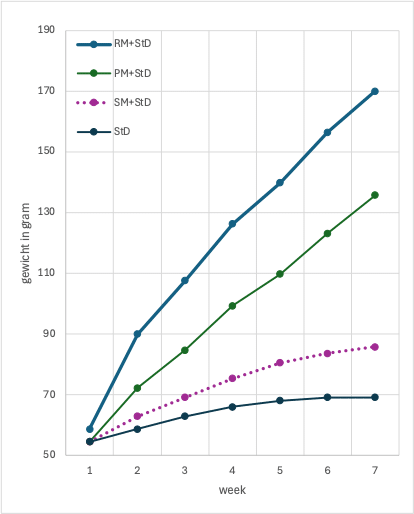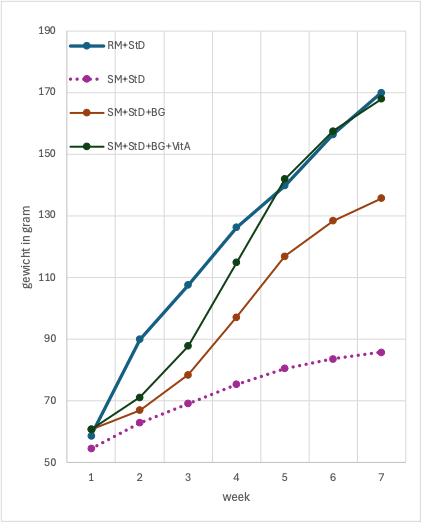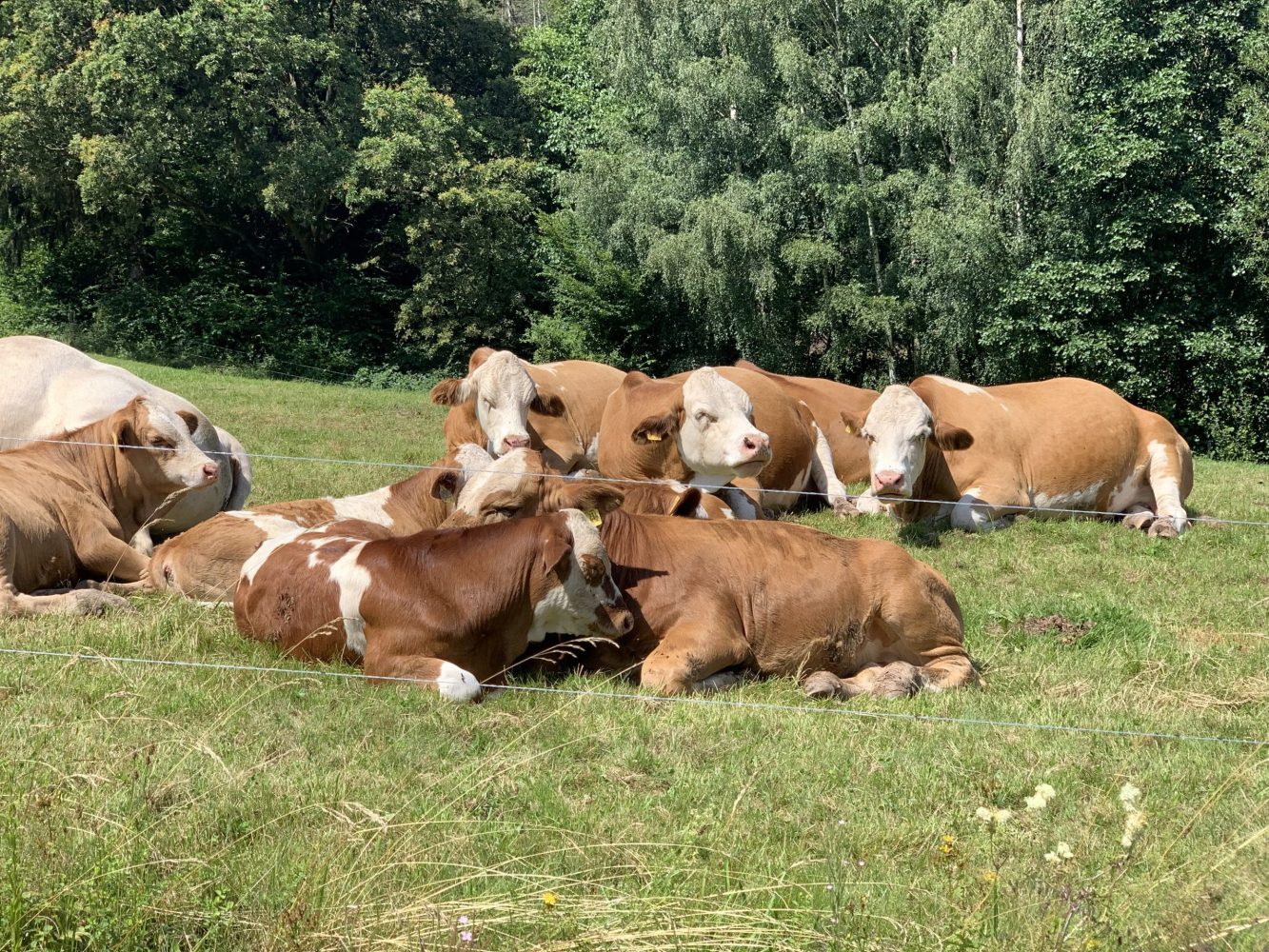Take home message
- Raw milk is as a complete food for young, growing animals
- When raw milk is pasteurised or sterilised, growth lags (significantly) behind
- By feeding vitamins from the B-complex plus vitamin A in addition to sterilised milk, growth is normalised again. The cause for this is (still) unclear
The first half of the 20th century saw a great interest in the significance of vitamins for health. Rickets played a role in dark industrial cities like London, and young children developed bone deformities due to lack of vitamin D; sailors developed scurvy due to major vitamin C deficiencies on their months-long voyages. German researchers made an important contribution to understanding about various vitamins, unfortunately partly due to ethically controversial research in the 1930s-1950s on humans (Joost, 2012). However, German physician and food scientist Karl-Heinz Wagner (1911-2007) also used rats to investigate the impact of vitamins.
Milk as a whole food
In his German-language publication in the journal ‘Milchwissenschaft’, Wagner (1953) explains how he views nutrition. For him, ‘complete nutrition is a diet rich in all nutritional components that are known to have an effect on our physiology’. Wagner claims that raw milk belongs to this nutrition, as: ‘untreated, germ-free milk from herds free of tuberculosis’.
Wagner wanted to know, what effect heating milk (not so much mother’s own milk, but substitute cow’s milk) had on the growth of young animals (rats). On a basal diet together with (raw) mother’s own milk, the test animals showed normal growth and reproduction. Several experimental groups were given cow’s milk: raw (RM), pasteurised (PM) or sterilised (SM), in addition to their standard diet (StD), (Fig 1). Young animals thrive on milk, mother’s milk or, in this case, cow’s milk as well. Feeding milk as a supplement to the basic rat diet improves growth, however, heating the milk, and especially sterilisation of milk, greatly inhibits growth (Fig 1).

Fig 1. Growth of young rats from experimental week 1 to 7, which were fed milk in addition to their standard diet (StD): raw milk (RM), pasteurised milk (PM) or sterilised milk (SM)
Additional vitamins: yes or no?
A second experiment assessed, how the negative impact of sterilised cow milk could be turned. Two vitamins were used for this purpose. At the time, the vitamins had been discovered, but some of them could not yet be made synthetically. Wagner therefore fed brewer’s yeast, or baker’s yeast, Saccharomyces cerevisiae. This yeast is a source for the water-soluble vitamins of the B complex. B vitamins support metabolism and provide energy and growth. Vitamin A deficiency leads to night blindness, retarded growth, caries, scaly skin and lowers immunity. It is also known as Retinol and can be made from beta-carotene (= provitamin A).

Fig 2. Growth of young rats from experimental week 1 to 7, which were fed milk in addition to their standard diet (StD). The young animals were fed sterilised milk (SM), for control purposes the group fed raw milk (RM) is also shown. Two groups fed sterilised milk (SM) were supplemented with brewer’s yeast (BG), a vitamin B complex or with brewer’s yeast plus vitamin A (BG+vitA).
Wagner gave the brewer’s yeast alone (BG) or in combination with the fat-soluble vitamin A (BG+VitA). It is clear from Figure 2, that disappointing growth after milk sterilisation can be compensated, by feeding the animals additional vitamins. Growth improvement occurs especially, if they are fed from both vitamins B-complex plus vitamin A.
The study does not solve the causal question, it does not answer the question of ‘why’ the vitamins are needed and how they work physiologically. When we look at the differences above from current knowledge about heating cow’s milk, certain things are at least clear. The effects of heating are temperature- and time-dependent. Pasteurisation takes place at lower temperatures (63-75 oC), than sterilisation (>100 oC). Heating kills bacteria (in milk); heating primarily affects the most heat-sensitive whey proteins, which denature, among other things by lowering their concentration in the milk and reducing or eliminating their activity; continuous or high-temperature heating (sterilisation) leads to aggregate formation, i.e. proteins and sugars clump together.
It is quite possible that as a result of heating, transport processes provided by whey proteins do not take place or take place to a lesser extent. Vitamins no longer arrive at their destination. If you start adding vitamins now, you may be masking another process, such as the denaturing and functioning of the whey proteins. But there may also be another explanation, which we do not know (yet).
The significance of raw milk
We previously described differences in growth in rats in the context of research on vitamins and by heat treatment of milk. Back then, we concluded that providing additional vitamins reduced, eliminated or masked differences due to heating.
The question is whether it makes sense, or even justifies adding so many extra minerals, trace elements and vitamins to make a statement about the impact of heating milk on growth or health? In any case, it is clear, that if there is no supplementation in the diet of young animals, there is a distinction due to heating (Fig. 1) or even of the seasons, in which the milk was milked. Raw milk, on the other hand, can serve as a food in itself, can positively influence the growth of young animals and has a role in suppressing asthma and allergies. This is the basic value of raw milk, which, in terms of Wagner (1953), can serve as a complete food, both in terms of growth and development (Wagner, 1953) and immunologically (Abbring et al., 2019).
Literature
- Abbring, S., Kusche, D., Roos, T. C., Diks, M. A., Hols, G., Garssen, J., Baars, T. & van Esch, B. C. (2019). Milk processing increases the allergenicity of cow’s milk – Preclinical evidence supported by a human proof‐of‐concept provocation pilot. Clinical & Experimental Allergy, 49(7), 1013-1025.
- Joost, H. G. (2012). Carl Arthur Scheunert’s experiments on human nutrition, 1938-1943: Boundary transgressions of a scientist under National Socialism. Medizinhistorisches Journal, 296-334.
- Wagner, K. H. (1953). Der biologische Wert sterilisierter Milch. Milchwissenschaft, 8, 364-366.




